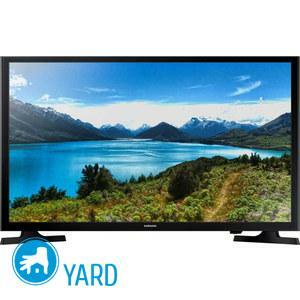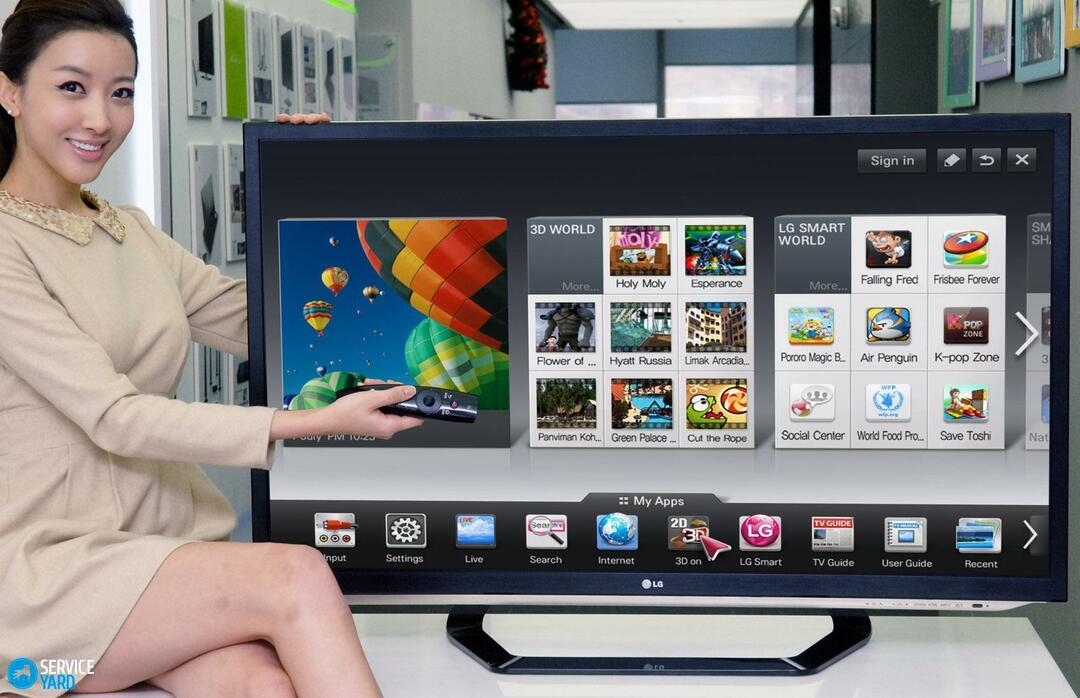
- Variety of matrices for LCD TVs
- Choosing the best matrix for the TV
When it comes to buying a new TV for a large family, as a rule, a lot of questions and problems arise, because this is a rather difficult task. In the modern market models of TV sets are not only already famous brands, but also newcomers in this field of production. So it's easy enough to get confused. In addition, this type of equipment is bought for a long period of time, and it must necessarily have the highest reliability, quality, and be technically and multifunctional. During the selection, it is necessary to give maximum attention to such an important detail as the matrix, since the quality of viewing and the life of the equipment largely depend on its performance. It's about what type of matrix is best for a TV, and we'll talk about this article.
to the contents ↑Varieties of matrices for LCD TVs
Due to its popularity LCD TVs have long been breaking all records. They completely superseded obsolete models from the market and confidently occupy the position of the leader. So, the main element of any TV of this type is the matrix responsible for image quality. Therefore, it is so important to understand which matrix is better.
To date, there are three main types of this part of the TV:
- TN.
- MVA( PVA).
- IPS.
To understand which matrix in TV is better, you need to study in detail the features, pros and cons of each of these options.
Matrices TN
Twisted Nematic( literal before "twisted crystal") is the most popular kind of matrix. In such a device, the control electrodes are located on two sides of the substrate.
If the transistor is turned off, there will be no electric field. But the crystal molecules will be characterized by a normal state, and their construction will resemble a spiral.
Since the polarization angles of both filters are perpendicular to each other, the light passing through a transistor that is not active will freely flow out. It is this light that forms bright points, and due to the light filter its color is determined.
After the transistor starts working, an electric field is created, the crystal molecules line up, which is parallel to the polarization angle. When the flow of light passes through them, the light does not change in its characteristics at all. The second filter can fully absorb light, thus generating a black dot at its location.
Advantages of TN matrices:
- It is considered to be the earliest technology, but at the same time it is not inferior to modern analogues.
- Such matrices are actively used in the manufacture of inexpensive liquid crystal dies for budget televisions.
Disadvantages of TN matrices:
- Impossible to fully control the rotation of crystals, because of which light often passes through the gate. This negatively affects the level of contrast, and black dots turn into gray spots.
- Quite often in such models there is a phenomenon of "broken pixels".
Important! Even though there are shortcomings, these matrices are still actively used due to their affordable cost. Such a budget solution today is quite popular.
MVA or PVA matrix
The name of these matrices is translated literally as vertical multi-zone alignment. They are the brainchild of the world-renowned Fujitsu company. In a matrix of this type, the control electrodes are arranged as in the devices described above.
Important! Their difference consists only in the fact that they are divided into several cells or zones. And these zones or cells are created by special protrusions that are present inside the filters.

Features:
- This design is good in that it allows the crystals to move freely. Due to this, viewers can observe a variety of shades that do not change depending on the angle at which viewing takes place. Therefore, they are better than TN matrices.
- Another difference is the perpendicular arrangement of liquid crystals with respect to the second filter, provided that there is no power supply. Due to this, the most intense black shade is provided.
- And when the electric field increases, the molecules turn, and gray dots are created. And thanks to this, the angle of view does not matter anymore.
Important! This, of course, is not the best matrix for TVs, but they are far superior in all respects to the TN model.
Matrixes IPS
This is the most interesting kind of matrix for TVs. Their main advantage is the arrangement of all control electrodes in one plane. Fans of the world-famous Hitachi consider this variant of the matrices to be the best.
In the absence of an electric field, the crystal molecules are placed exclusively vertically, whereby they cease to affect the angles of polarization of light passing through these molecules. In this embodiment, the filter angles are at a right angle, and that is why the light passing through the transistor is instantaneously absorbed by the second filter.
As soon as an electric field appears, the molecules immediately rotate at a right angle, which leads to a change in the level of polarization of the light flux passing through the second filter.
Important! In most cases, this technology is a compromise solution - due to its application, the level of light transmission is increased and the maximum viewing angles are guaranteed.
to the contents ↑Choosing the best matrix for the TV
Now we will get an answer to the question how to choose the matrix for the TV yourself. First of all, the choice of this element depends on the financial capabilities of the buyer and his basic needs:
- Those who are interested in budget options with standard requirements for image quality, it is better to choose models with matrices TN.Diagonally, such products do not exceed 32 inches, so this is the best option for office, kitchen or dacha.
- Also these TVs can be used for games, because any special effects and dynamic scenes on them will look great. Current manufacturers of such equipment in particular use the IPS and MVA matrices.
Important! The first option is ideal for home movies, because at the highest level reflects the quality of the picture of any format. They are also well suited for presentations that need the highest level of clarity in photo and graphics.
- The TVs with the MVA matrix are a bit inferior in quality to the pictures, but they are also cheaper, so they are chosen to watch films in a small family circle.
In this article we have considered all possible types of matrices for LCD TVs. We hope, on the basis of the information received, you were able to choose a more acceptable option for yourself. Hence - the quality of TV viewing will meet your expectations.


